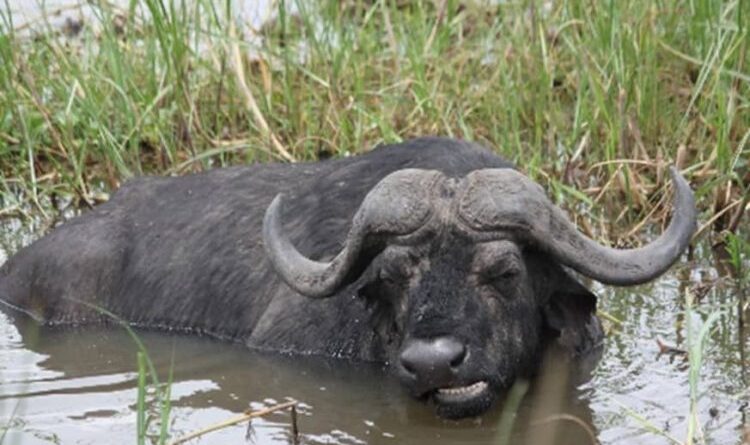The Water Buffalo: An Insight into Africa’s and Asia’s Unique Wildlife
Buffalo-This animal is highly favored by tourists for its long lifespan of over 30 years, its ability to breed for up to 11 months, and its reproductive cycle every two years.
Water buffaloes come in two main types: African and Asian. There are also similar animals in North America called Bison.
The buffaloes in the wild and those raised for farming, known as Oxen, originate from Asia and Africa.
The aquatic varieties, native to India and other parts of Asia, have large horns, robust legs adapted for swampy environments, short and dense fur, and a significant amount of bare skin.
In swampy areas, aquatic buffaloes can be quite aggressive. In the Philippines, these buffaloes are known as Carabao. Another Asian species is the Tamaraw, which is smaller and has more fur compared to aquatic buffaloes. A related species inhabits the Indonesian islands.
In Africa, there are two main types of buffaloes: forest buffaloes and savanna buffaloes.
In Rwanda, they can be found in Volcanoes National Park and Akagera National Park. During the dry season, buffaloes may travel up to 17 kilometers in search of food and water. They graze both during the day and night, but rest during the night to avoid predators.
During the wet season, buffaloes graze at a rate of 56% at night and 52% during the day. They often graze from 2 PM to 3 PM during the wet season, while in the dry season, they usually finish grazing by 4 PM, preparing to rest until dawn.
Buffalo herds are generally mixed but can separate based on age and dominance. Female buffaloes usually live longer, around 30 years, and sometimes show aggressive behavior when threatened or when they have issues with their herd.
Akagera National Park is home to many buffaloes, which are distributed throughout the park but are more frequently seen in the Kilala, Muhana, and Nyamwashama valleys, and in the Mutumba area and its surroundings. In the park, older buffaloes often show weakened strength, causing younger buffaloes to drive them away. Visitors may encounter both peaceful and aggressive buffaloes depending on the time and place of their visit.
Visiting Akagera National Park provides a fascinating experience as buffalo sightings are a highlight for many tourists.
This article was written by Ndagijimana Innocent, a wildlife writer and conservationist with over 15 years of experience working in national parks, including Nyungwe, Volcanoes, and Akagera National Parks. Innocent holds a secondary school diploma in tourism, a bachelor’s degree in wildlife management, and a master’s degree in environmental conservation.

